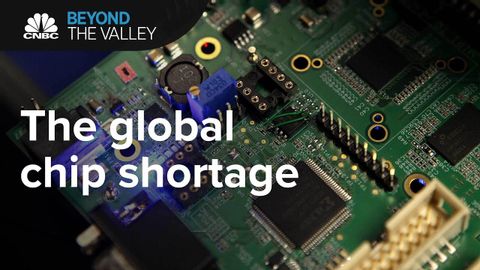全球芯片短缺可能會影響你的日常生活 | CNBC Beyond The Valley (The global chip shortage will probably hit your everyday life | CNBC Beyond The Valley)
Summer 發佈於 2021 年 10 月 08 日  沒有此條件下的單字
沒有此條件下的單字US /pɚˈspɛktɪv/
・
UK /pə'spektɪv/
- n. (c./u.)透視;觀點,態度;觀點;恰當的比重
US /ˈɛpɪˌsod/
・
UK /'epɪsəʊd/
- n.插曲;集;(電視或廣播節目的)一集;事件;一段時期;(疾病的)發作
US /ɪˈvɛntʃuəli/
・
UK /ɪˈventʃuəli/
